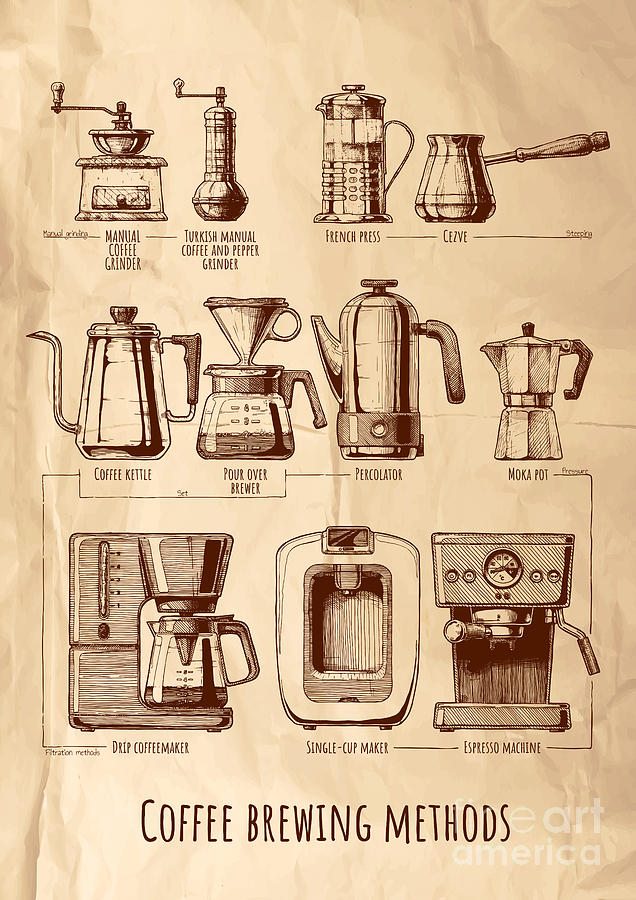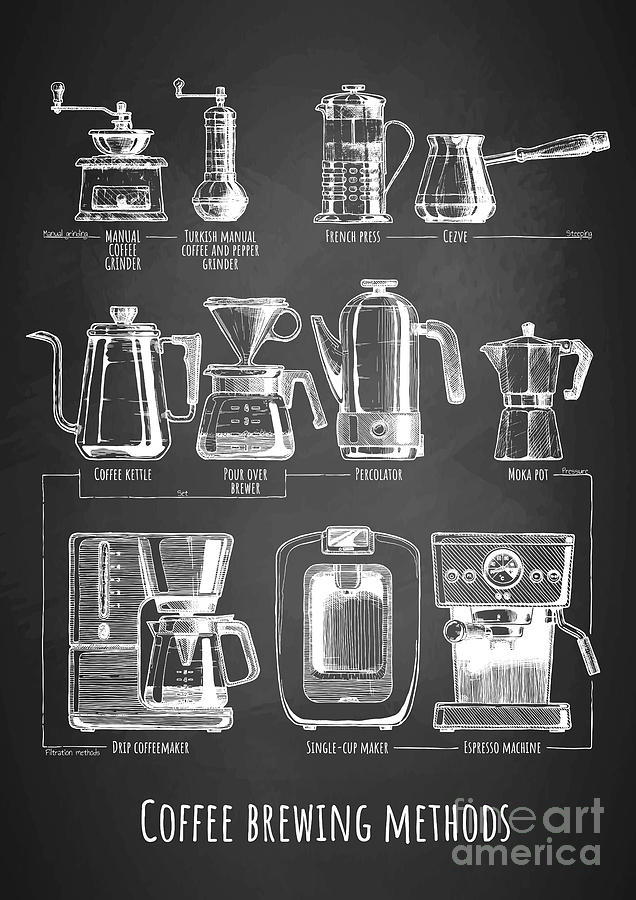The Impact of Different Coffee Brewing Methods on Taste and Scent
The Impact of Different Coffee Brewing Methods on Taste and Scent
Blog Article
The Science Behind Coffee Brewing: How Temperature and Time Affect Your Beverage
Recognizing the science behind coffee brewing discloses that temperature level and time are not simple variables however critical elements that dictate the drink's taste account and total top quality. As we discover the subtleties of these aspects, the inquiry emerges: how can one efficiently balance temperature and time to accomplish that best brew?
The Chemistry of Coffee Extraction
The chemistry of coffee extraction looks into the elaborate processes that transform raw coffee beans into the aromatic beverage enjoyed worldwide. This makeover primarily entails the solubility of different substances present in the beans, which are affected by elements such as work dimension, water high quality, and the developing technique utilized.
Throughout the brewing procedure, warm water functions as a solvent, extracting soluble compounds, consisting of caffeine, acids, sugars, and lipids, from the coffee premises. Each compound adds to the taste profile, scent, and body of the last drink. Acids are liable for zesty and brilliant notes, while oils add to a rich mouthfeel.
The removal procedure is not uniform; various substances dissolve at different rates. The preliminary phases of brewing extract acids and sugars, bring about a positive level of acidity, while long term extraction can result in anger due to over-extraction of unwanted compounds. Comprehending these chemical communications is crucial for maximizing brewing strategies, as the balance between extraction time and water temperature level can significantly influence the overall high quality of the coffee. Eventually, grasping the chemistry of coffee removal is essential to accomplishing a tasty and all-round mug.
Ideal Developing Temperatures
Discovering the best brewing temperature level is crucial for opening the full possibility of coffee tastes and scents - coffee brewing methods. Research shows that the optimum variety for brewing coffee exists in between 195 ° F to 205 ° F(90 ° C to 96 ° C) Within this variety, the extraction process successfully dissolves the preferable soluble substances in coffee beans, bring about a flavorful and well balanced cup
Developing at reduced temperatures, such as below 195 ° F(90 ° C ), might lead to under-extraction, producing an acidic and weak brew with low-key flavors. On the other hand, brewing at temperatures exceeding 205 ° F(96 ° C) can lead to over-extraction, generating a rough and bitter preference because of the extreme dissolution of unfavorable compounds, such as tannins.
Moreover, the optimal developing temperature can vary depending on the coffee bean type and roast degree. For example, lighter roasts usually benefit from slightly greater temperatures to enhance their complicated flavor profiles, while darker roasts may be much better fit to lower temperature levels to minimize anger.
Inevitably, keeping precision in brewing temperatures is vital for achieving a harmonious equilibrium of flavors, guaranteeing that every mug of coffee provides a gratifying sensory experience.
Impact of Developing Time
Developing time plays an essential function in figuring out the taste account and general high quality of coffee. The extraction process, which influences the taste, aroma, and body of the drink, is largely dependent on how much time the coffee grounds are in contact with water. Much shorter developing times can cause under-extraction, leading to a sour or weak taste, as not adequate soluble substances are liquified. Conversely, prolonged developing can lead to over-extraction, where unfavorable substances are released, leading to an astringent or bitter preference.
Ideal brewing time differs depending on the approach utilized and the grind size of the coffee. A French press normally needs about 4 minutes, while espresso removal is normally finished within 25 to 30 seconds. It is important to adjust brewing time in combination with various other variables, such as water temperature and coffee-to-water proportion, to accomplish the desired taste account.
Recognizing the impact of developing time enables coffee lovers to refine their developing techniques, ultimately boosting the sensory experience of their cup (coffee brewing look at here methods). With mindful interest to this variable, one can open the full capacity of the coffee, disclosing its distinct features and nuances
Developing Approaches and Their Effects

For example, techniques like French press and cool brew permit a longer steeping time, leading to a fuller body and robust taste due to boosted removal of oils and soluble solids. Alternatively, espresso brewing utilizes high pressure and a shorter extraction time, creating a focused shot that stresses extreme flavors and a rich crema.
Pour-over strategies, such as Chemex or V60, supply a more controlled removal procedure, permitting the brewer to manipulate flow rate and water circulation, which can enhance illumination and quality. Percolation methods cycle water through the coffee grounds multiple times, leading to a stronger, commonly bitter taste.
Last but not least, the use of paper filters versus steel filters can also influence the last taste; paper filters generally yield a cleaner mug by capturing oils and great particles, while steel filters permit more oils to pass through, adding to a fuller mouthfeel - coffee brewing methods. Recognizing these subtleties can raise the coffee experience substantially
Tips for Refining Your Brew
A well-executed mixture can change also the most basic coffee right into an amazing experience. To achieve this, focus to detail is necessary. Start with top quality, fresh baked beans, as their flavor account diminishes with time. Grind the beans simply prior to brewing to make the most of quality, guaranteeing the work size matches your developing technique-- coarser for French press and finer for coffee.
Water quality plays a critical function; usage filtered water devoid of contaminations. The perfect developing temperature level ranges in between 195 ° F and 205 ° F(90 ° C to 96 ° C ) Also hot can swelter the coffee, while too great may under-extract flavors.
Timing is similarly vital. For immersion approaches, steeping for three to 5 mins is optimum, whereas drip methods normally take about five minutes. Explore mixture times to find your preferred stamina.

Conclusion
In recap, the elaborate relationship in between temperature level and time is vital in the coffee brewing procedure. Comprehending these scientific concepts equips individuals to improve their developing techniques, inevitably leading to a much more pleasurable and balanced coffee experience.
Understanding the scientific research behind coffee brewing discloses that temperature level and time are not mere variables yet more info here essential aspects that determine the drink's flavor account and general quality. Recognizing these chemical interactions is check these guys out crucial for maximizing brewing strategies, as the balance in between extraction time and water temperature level can considerably affect the overall quality of the coffee.Brewing time plays a pivotal duty in identifying the taste account and overall top quality of coffee. By focusing on these aspects-- bean top quality, grind size, water temperature level, soaking time, and ratio-- you can raise your coffee developing process, resulting in a continually exceptional mug.
In recap, the elaborate partnership in between temperature and time is paramount in the coffee brewing procedure.
Report this page